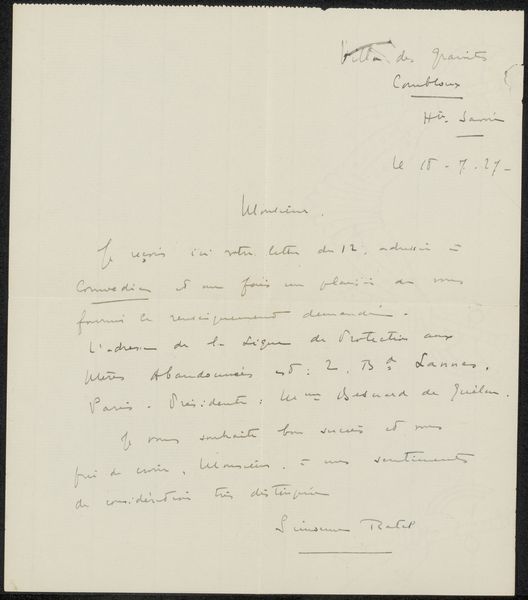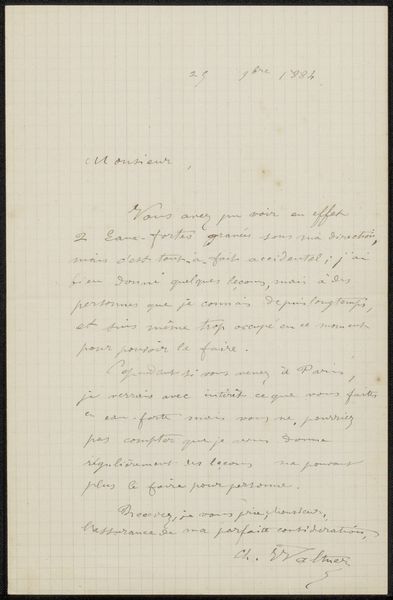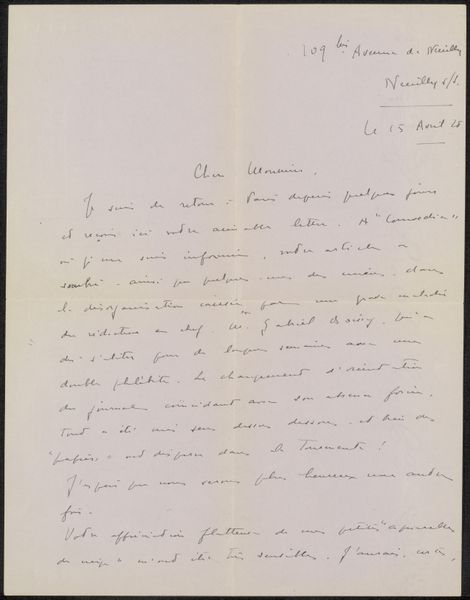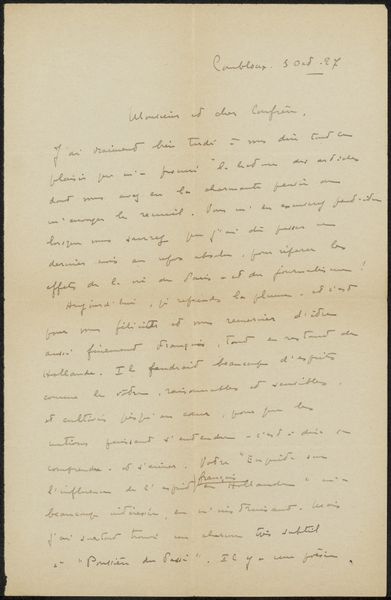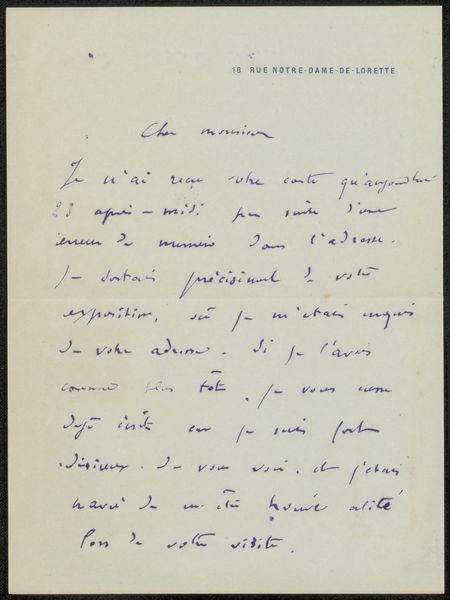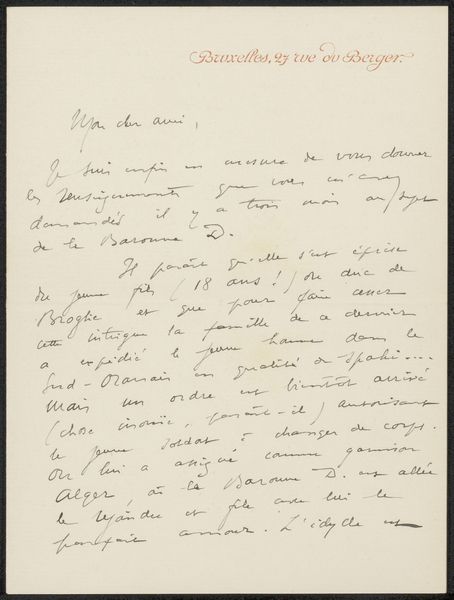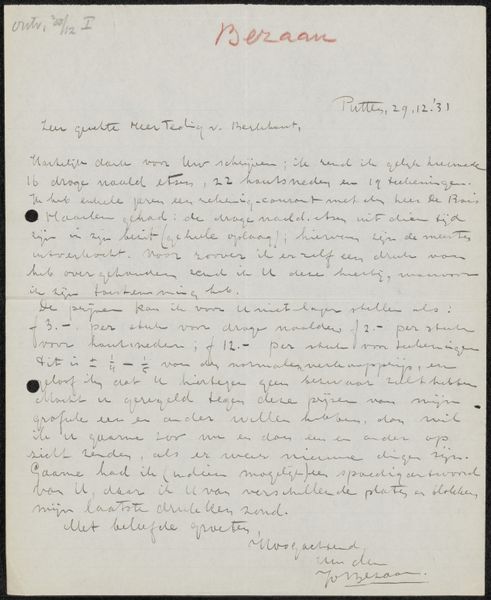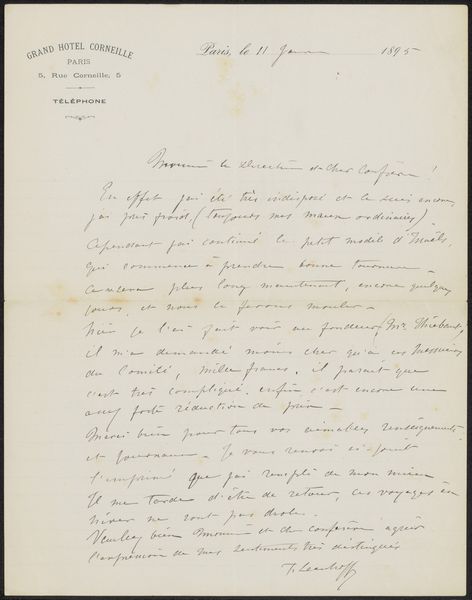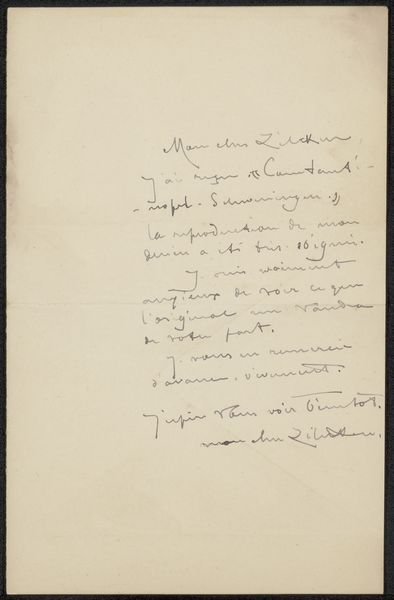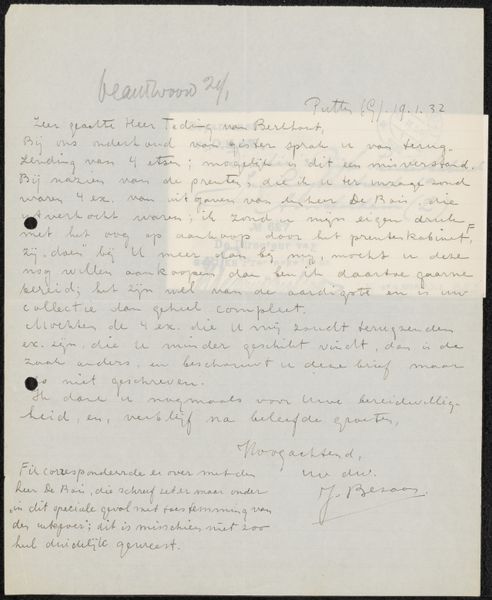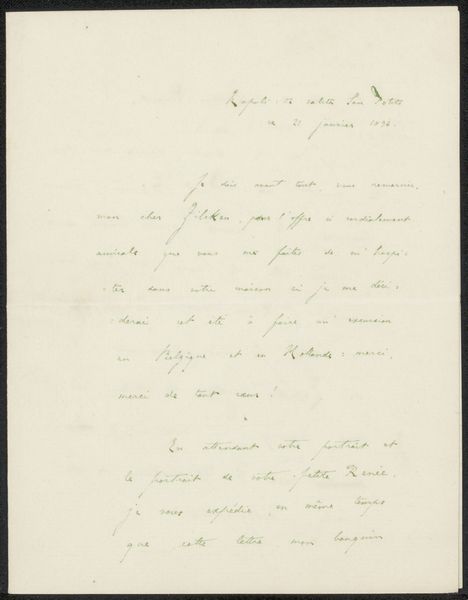
drawing, textile, paper, ink
#
portrait
#
drawing
#
textile
#
paper
#
ink
#
calligraphy
Copyright: Rijks Museum: Open Domain
Curator: Here we have “Brief aan Philip Zilcken,” which translates to “Letter to Philip Zilcken," attributed to Simonne Ratel and possibly dating back to 1927. The letter, executed in ink on paper and textile, presents itself as both drawing and text, blurring those lines beautifully. Editor: Immediately, I notice the intimacy of it, that quiet domesticity. It feels almost voyeuristic to read a personal letter frozen in time. The slanted handwriting suggests urgency or perhaps just a natural, flowing energy. Curator: Absolutely. Letters offer direct access to personal narratives and socio-political realities of the past. They function almost as time capsules, revealing details of everyday life and interactions. This specific letter could unlock much about the relationship between Simonne Ratel and Philip Zilcken and about the artistic circles they moved in. Editor: It begs the question, too, what kind of relationship? "Cher Monsieur"—"Dear Sir"—suggests a formality, yet the contents hint at shared creative endeavors, discussions about ideas. The lack of context surrounding these figures forces us to piece together fragments of history, imagining their lives within the rigid social structure of the time. Curator: True, the salutation does indicate formality. Zilcken was an established artist, critic, and art administrator, which may suggest Ratel felt compelled to be respectful of their dynamic, yet perhaps there are personal ties implied too through creative interests? These figures existed in a specific milieu that shaped the content and purpose of their exchange. Editor: Indeed. And look at the materiality of the letter itself. The choice of paper, the quality of the ink, even the way the text sits on the page – each detail informs our understanding. A digital transcription loses so much of the embodied experience of reading the original. This object’s very presence as a piece of paper holds weight beyond what's written. It existed; it was touched, mailed, read. Curator: It's an interesting point about the physicality, since digital humanities are changing how we think about letters now. Does seeing the digitized object change our interaction or appreciation of it? How does an art institution participate or control the perception? Editor: Inevitably. Our encounter is filtered, mediated. But the power of the original, with its aura of authenticity, still captivates, doesn't it? These little documents are more like relics than records. Curator: A lovely way to view these. "Brief aan Philip Zilcken" offers such a rich entry point for examining creative and societal currents from almost a century ago. Editor: Indeed, and a reminder of the voices – often marginalized or forgotten – that deserve our attention.
Comments
No comments
Be the first to comment and join the conversation on the ultimate creative platform.
